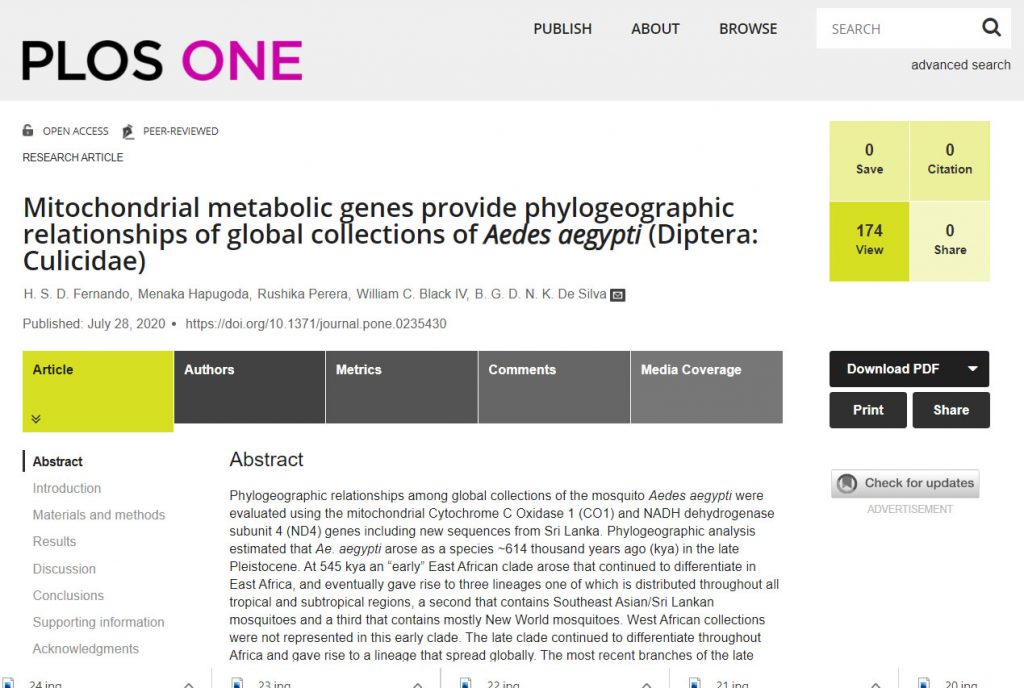Authors: H. S. D. Fernando, Menaka Hapugoda, Rushika Perera, William C. Black, B. G. D. N. K. De Silva
Journal: PLoS ONE
Phylogeographic relationships among global collections of the mosquito Aedes aegypti were evaluated using the mitochondrial Cytochrome C Oxidase 1 (CO1) and NADH dehydrogenase subunit 4 (ND4) genes including new sequences from Sri Lanka. Phylogeographic analysis estimated that Ae. aegypti arose as a species ~614 thousand years ago (kya) in the late Pleistocene. At 545 kya an “early” East African clade arose that continued to differentiate in East Africa, and eventually gave rise to three lineages one of which is distributed
throughout all tropical and subtropical regions, a second that contains Southeast Asian/Sri Lankan mosquitoes and a third that contains mostly New World mosquitoes. West African collections were not represented in this early clade. The late clade continued to differentiate
throughout Africa and gave rise to a lineage that spread globally. The most recent branches of the late clade are represented by South-East Asia and India/Pakistan collections. Analysis of migration rates suggests abundant gene flow between India/Pakistan and the rest of the world with the exception of Africa.



